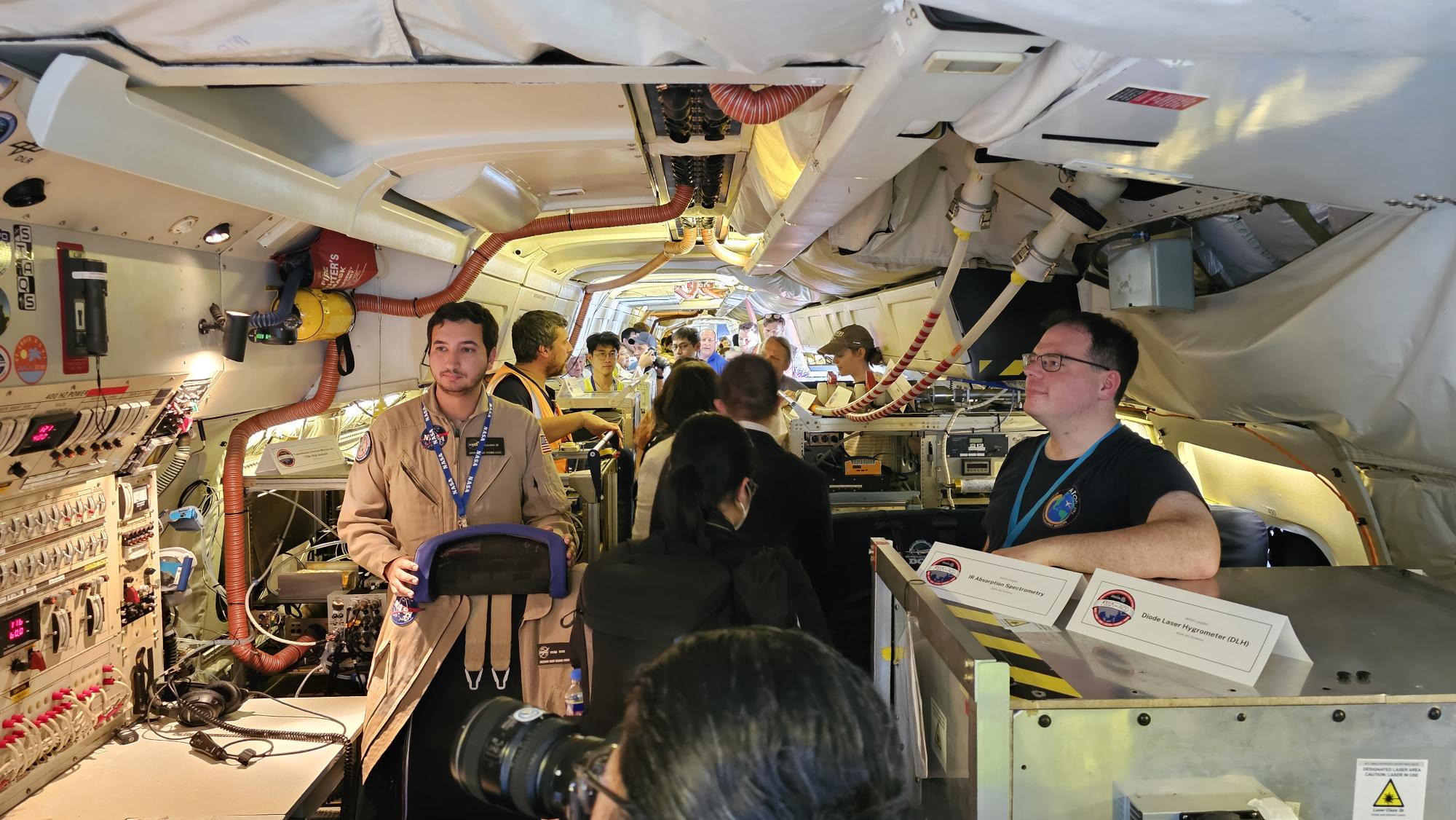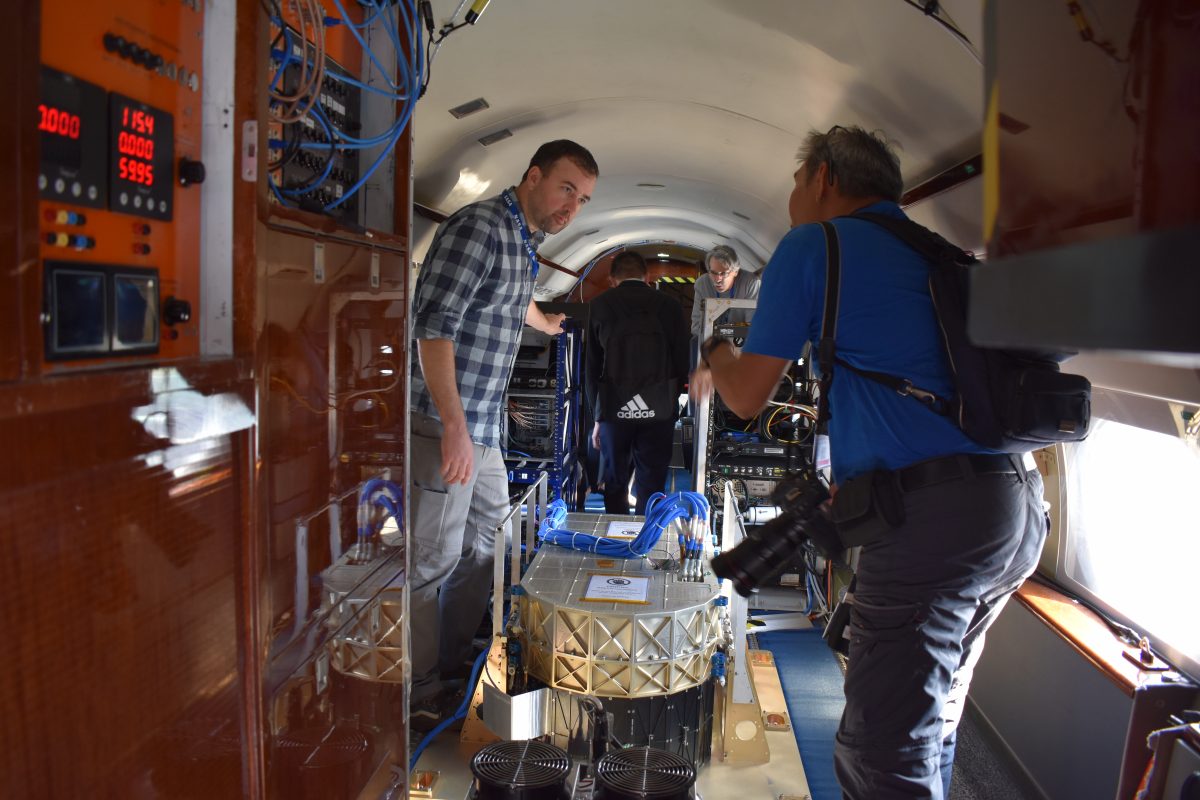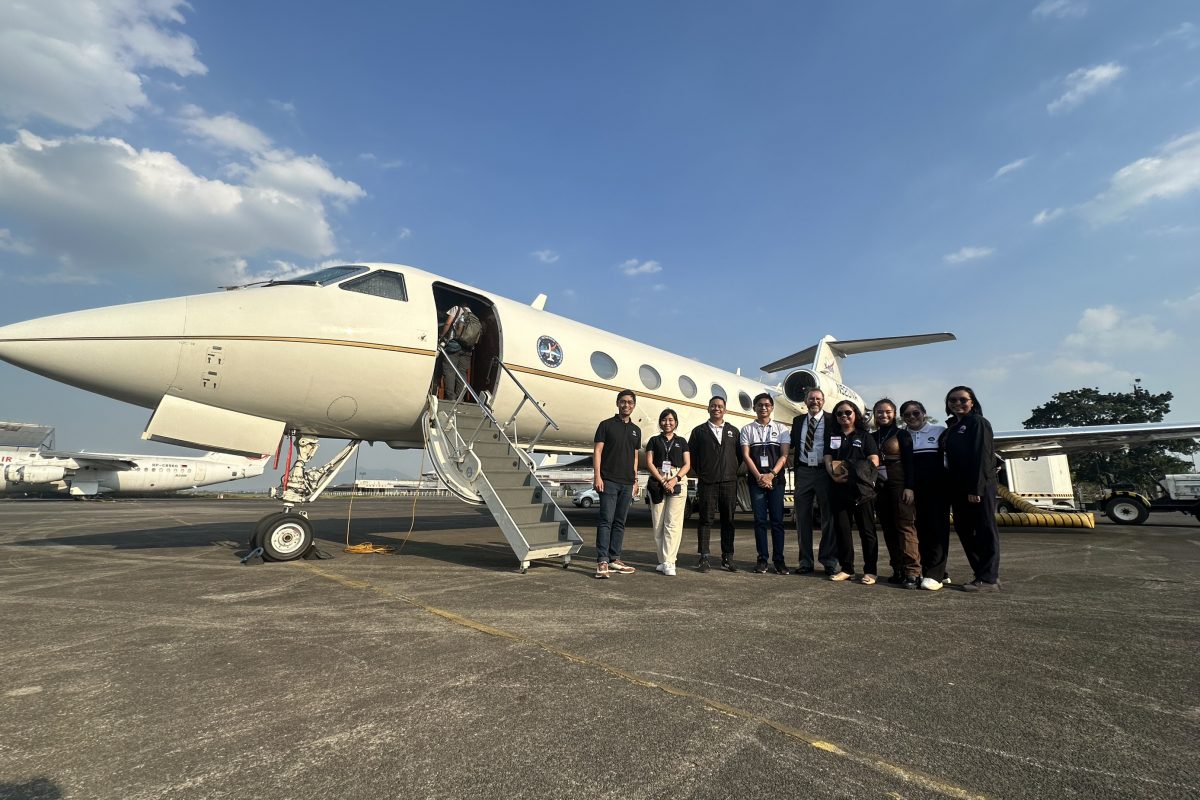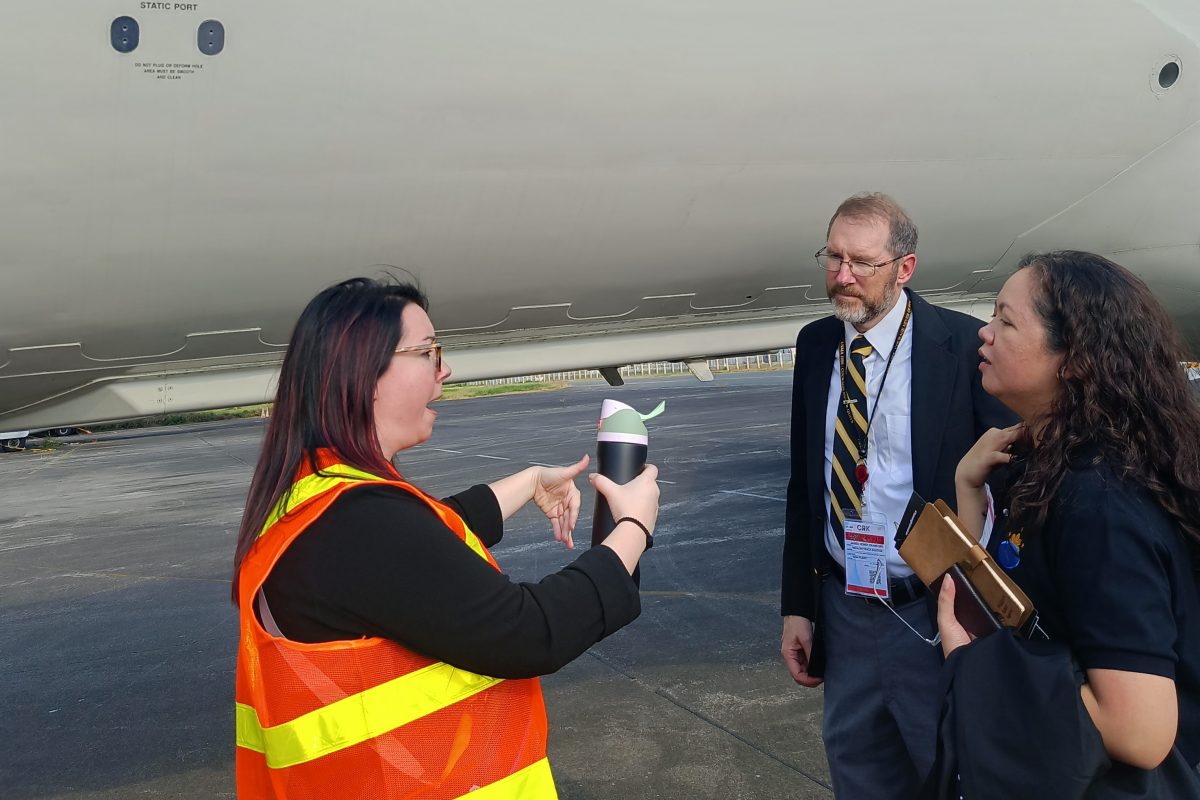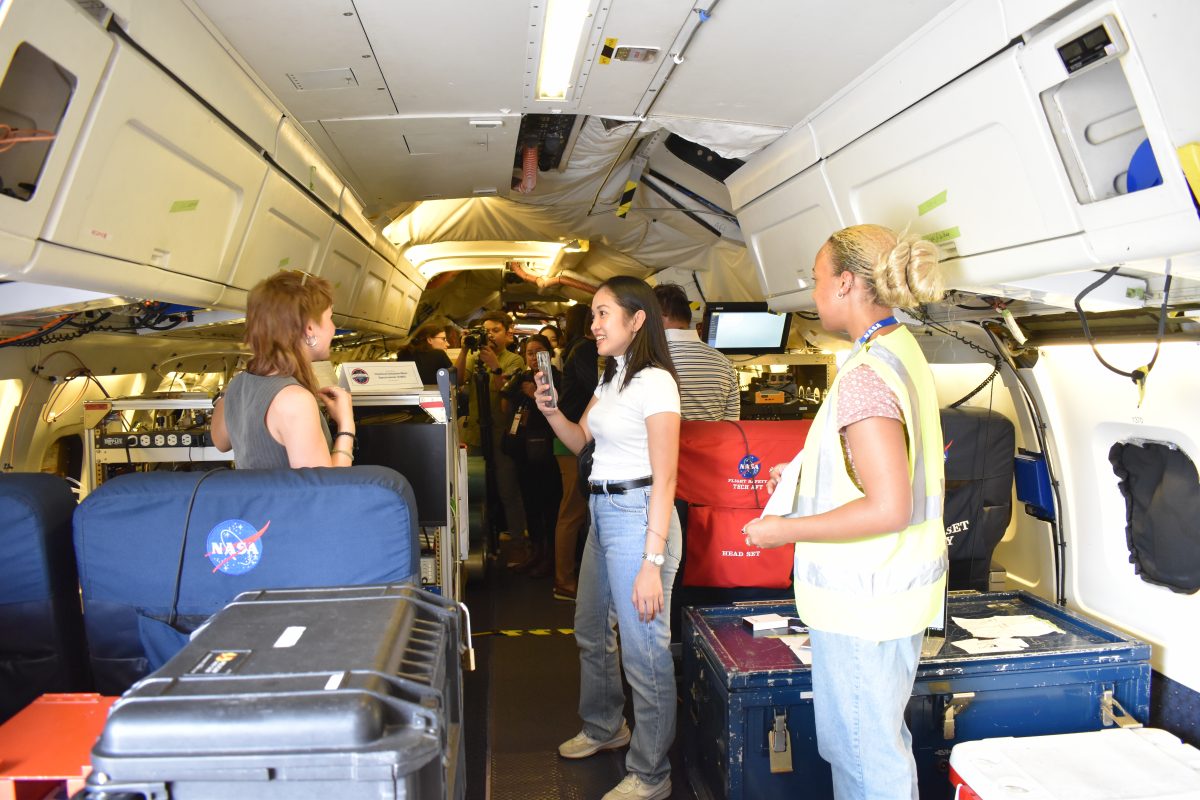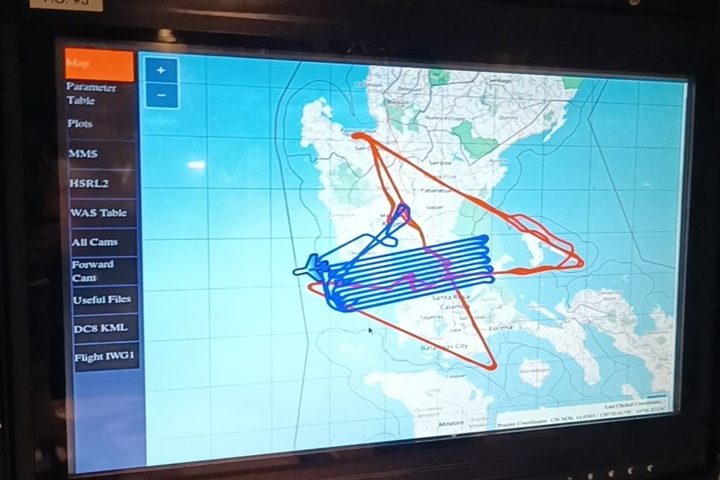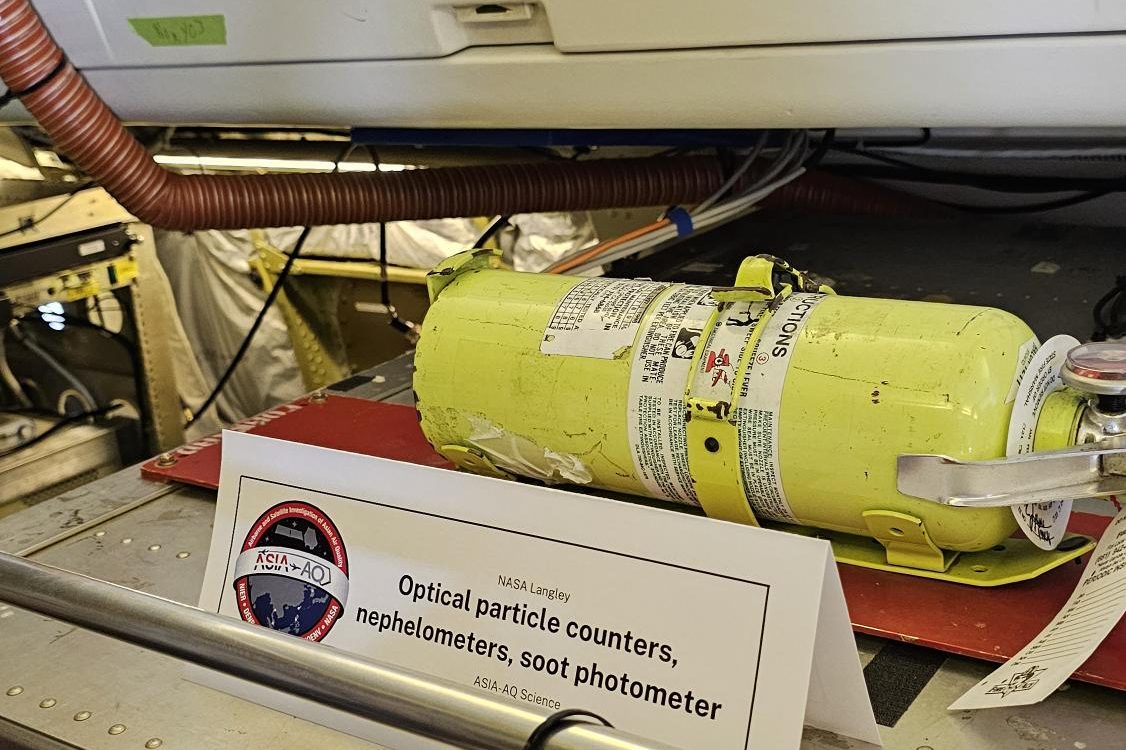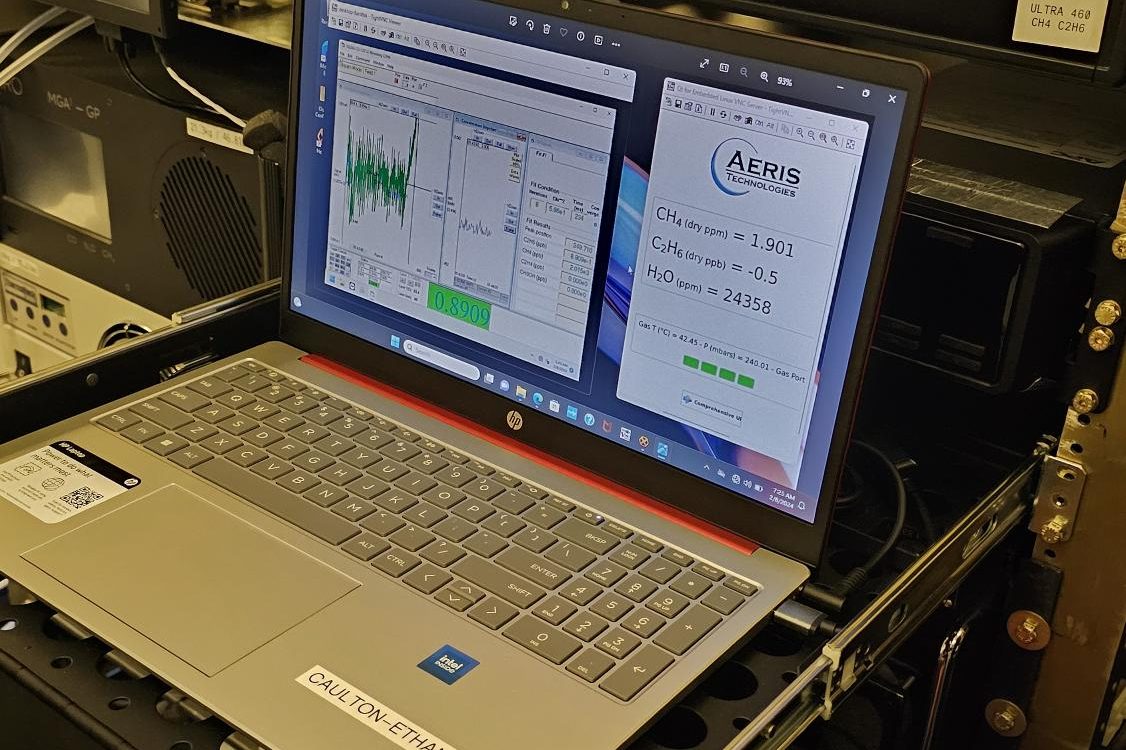Researchers from the Philippine Space Agency (PhilSA) were part of the select group of Filipino scientists and engineers who took part in the Philippine leg of the Airborne and Satellite Investigation of Asian Air Quality (ASIA-AQ) flights led by the US National Aeronautics and Space Administration (NASA) this February 2024.
Dr. Julie Ann Banatao, Chief of PhilSA’s Spacecraft Electrical and Computing Systems Development Division, and Ellison Castro from the PhilSA Earth Sciences Space Missions Division were among the Filipinos who boarded NASA’s ASIA-AQ flying laboratories on the 4th flight day in the Philippines, last 13th February.
The Philippines was one of 4 countries selected for the ASIA-AQ mission this year, along with Thailand, Malaysia, and South Korea. The international research initiative is as a collaborative endeavor between NASA and various international research and government organizations, including the Korean National Institute of Environmental Research (NIER), Universiti Kebangsaan Malaysia (UKM), the Geo-Informatics and Space Technology Development Agency Thailand (GISTDA), Ministry of Environment Taiwan (MOENV), Department of Environment and Natural Resources (DENR), Manila Observatory, and PhilSA. This initiative aims to comprehensively understand the quality of the air we breathe. The ASIA-AQ team conducts detailed atmospheric data collection across several locations in Asia to enhance research and refine models for air quality improvement.
During the ASIA-AQ mission, NASA deployed two aircraft over Metro Manila and its surrounding provinces for air quality sampling: the DC-8 aircraft housing in-situ instruments for detailed lower atmosphere composition measurement, and the Gulfstream III (G-III) jet equipped with optical and Lidar sensors.
On board the flying laboratory
As a technical partner, PhilSA will utilize air quality data from the DC-8 aircraft instrument payload to validate data from the Geostationary Environment Monitoring Spectrometer (GEMS) and Pandora instruments under the Pan-Asia Partnership for Geospatial Air Pollution Information Project and the Pandora Asia Network (PAPGAPI-PAN) Philippines Project facilitated through the Korea International Cooperation Agency Philippines (KOICA).
Ellison Castro, a PhilSA researcher engaged in the PAPGAPI-PAN Project, provided insights from aboard the DC-8 aircraft, observing the scientists conduct experiments and coordinate with pilots. Reflecting on the experience, Castro expressed, “It’s cool to see their measurements in real-time when they pass by refineries or power plants. Medyo nakakakaba rin, kasi hindi typical commercial plane ang safety requirements, so you somehow need an iron stomach kapag aangat siya from a mis-approach o yung mababang lipad ng eroplano (It’s a bit nerve-wracking, since the safety requirements aren’t for a typical commercial plane, so you somehow need an iron stomach during a mis-approach, which is when the plane suddenly drops to a lower altitude).”
The DC-8 aircraft, equipped with 26 instruments primarily spectrometers, actively samples air and measures its composition. Castro emphasized the significance of ASIA-AQ measurements for the Philippines, noting, “The data collected during the ASIA-AQ can be used to further fine-tune measurements from the GEMS satellite, whose primary mission is measuring air quality in Asia, and the data can give us a glimpse on the pollution sources in Metro Manila and surrounding provinces. This characterization of the atmosphere can lead to a better forecast of air quality.”
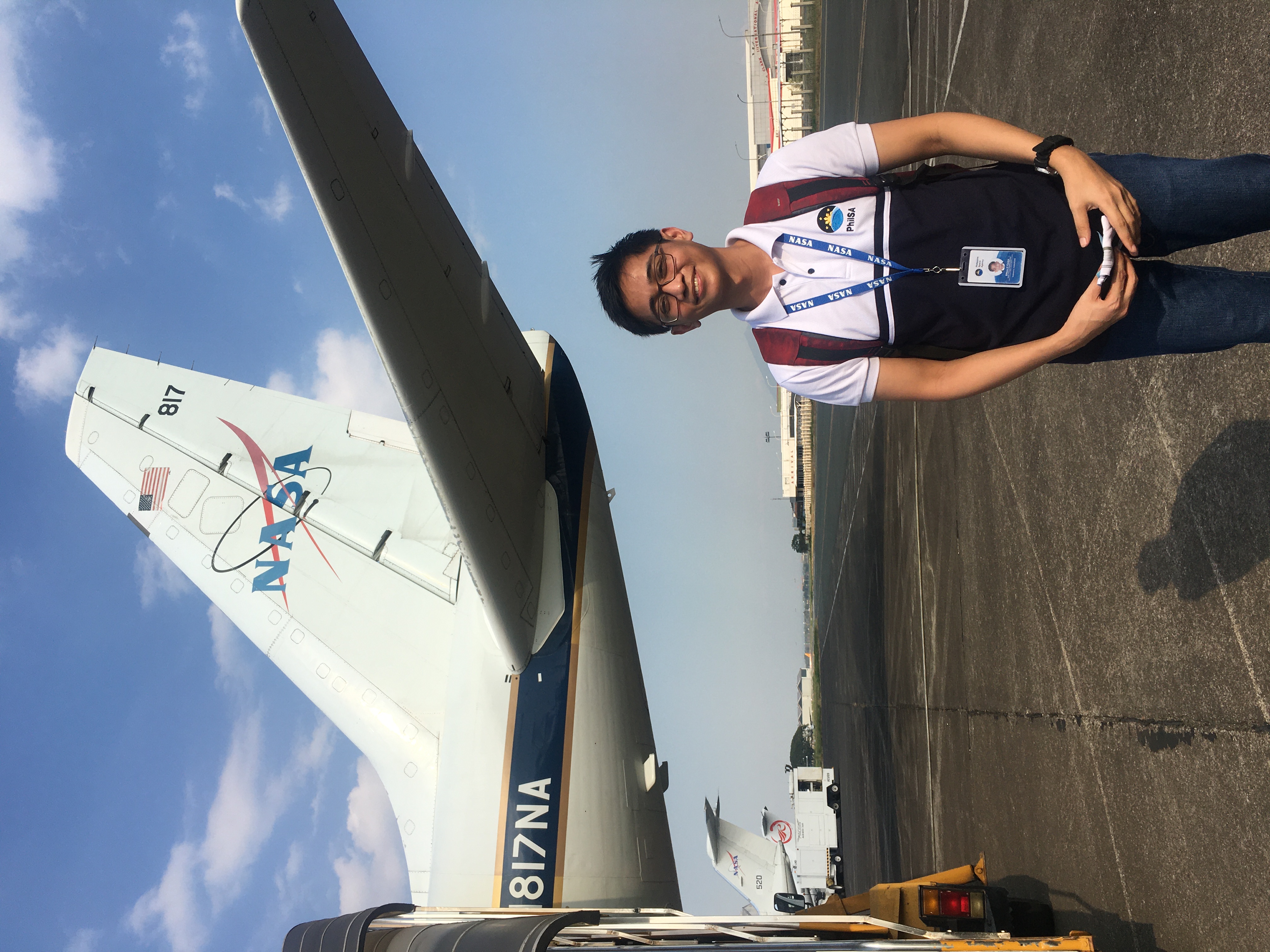
Ellison Castro, Senior Science Research Specialist from the PhilSA Earth Sciences Space Missions Division, in front of the NASA DC-8 “flying laboratory” (Clark International Airport, February 2024)
Dr. Julie Ann Banatao, a satellite development expert at PhilSA and former member of the Diwata-2 microsatellite team, participated in the G-III aircraft flight. Since the G-III carried payloads like those carried by satellites, she observed how the scientists monitored the payloads and adjusted the parameters as the data were received.
She says of her experience, “As a satellite engineer, it was cool to see the hardware set-up for monitoring the important parameters of the instrument such as the temperature and the sensor readings. Most were controlled automatically but some were also monitored manually to ensure that the instruments are calibrated, and data are still within the expected range.”
Dr. Banatao further highlighted the experience’s potential insights into NASA’s payload design philosophies, offering opportunities for PhilSA to develop payloads with comparable complexity in the future. Reflecting on her flight experience, she expressed gratitude for the opportunity to engage with NASA scientists, gaining firsthand exposure to their experiments and operational processes.
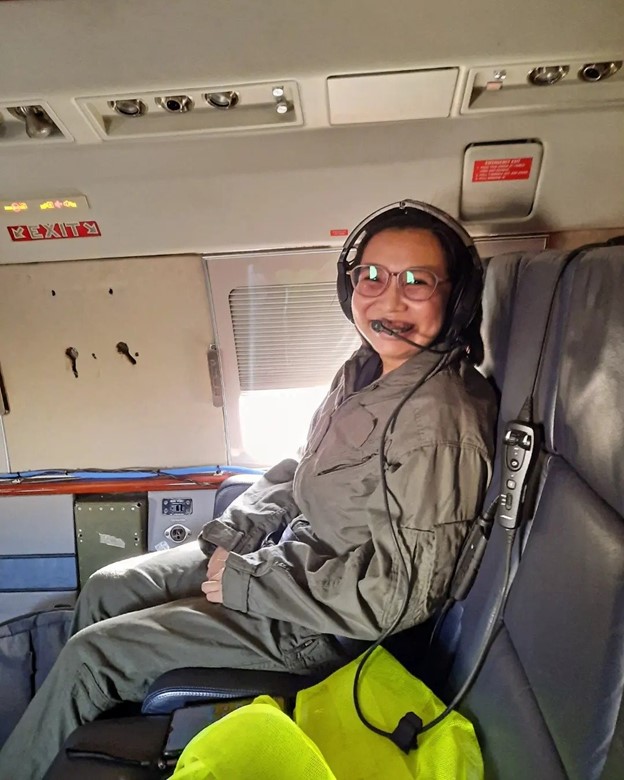
Dr. Julie Ann Banatao, Chief Science Research Specialist of the PhilSA Spacecraft Electrical and Computing Systems Development Division, on board NASA’s G-III (Clark International Airport, February 2024)
Prior to the flights, the ASIA-AQ team held a media day on 08 February 2024 led by the DENR, with the Department Secretary Maria Antonia Yulo Loyzaga in attendance. PhilSA Deputy Director General for Space Science and Technology, Dr. Gay Jane Perez, joined Atmospheric Chemistry Senior Scientist James Crawford of NASA, and Gangwoong Lee of NIER, Environmental Management Specialist Paul Vallar of DENR-EMB, and Dr. Maria Obiminda Cambaliza of Manila Observatory and Ateneo de Manila University in a science panel discussion during the press conference.
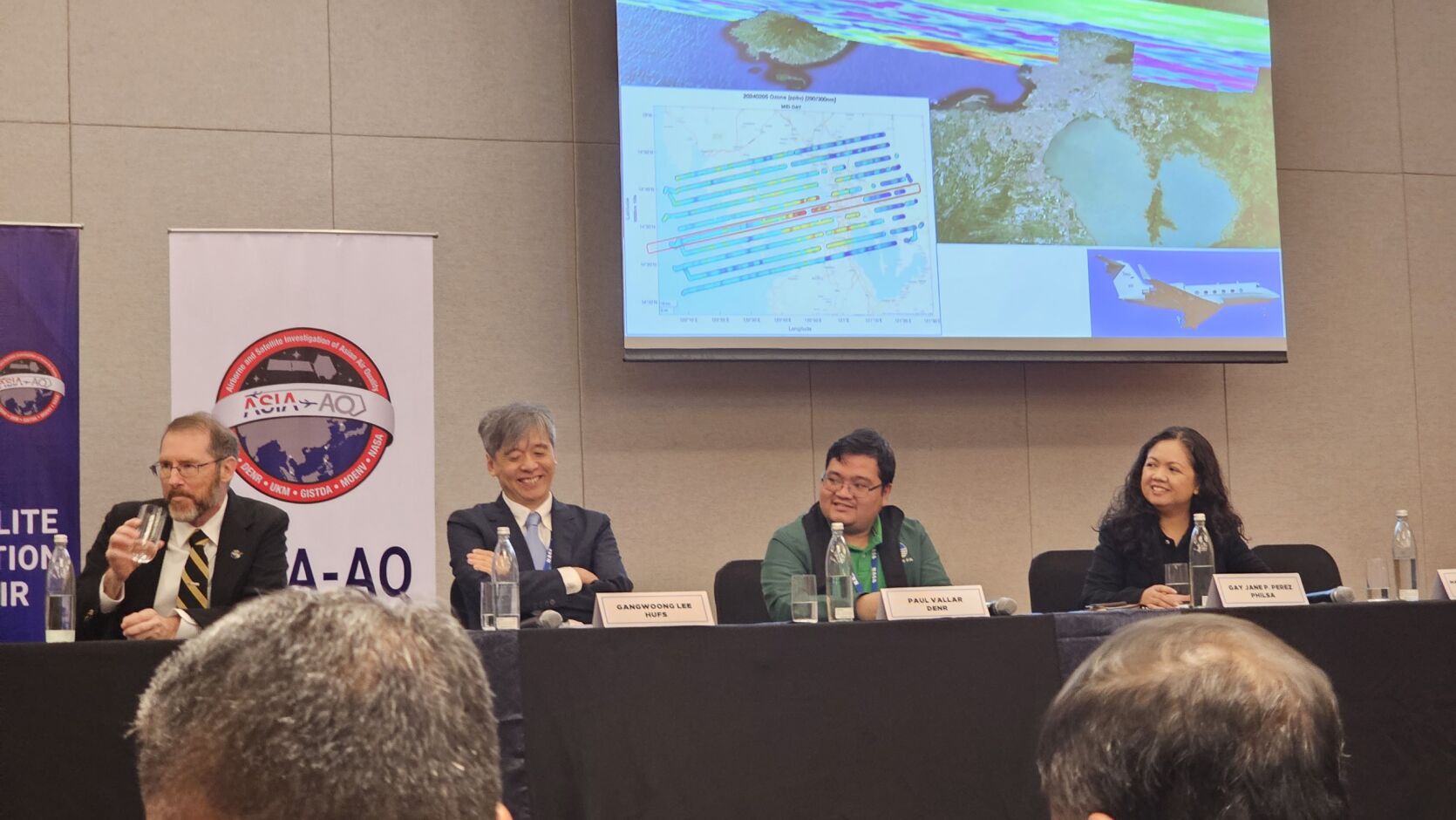
In her message during the press conference, Dr. Perez stated, “Together we are all partnering for better monitoring and understanding various factors affecting our national air quality. PhilSA is grateful and remains committed, being part of the ASIA-AQ science mission. As a local steering group member, PhilSA contributes to the immediate and long-term objectives of improving our specific understanding of local air quality and also contributes to the general understanding of shared challenges in the interpretation of satellite observations and reliability of air quality models.”
NASA and DENR also signed a Memorandum of Understanding on the Cooperation on Asia Air Quality Field Study, represented by Tropospheric Composition Program Manager Barry Lefer and Secretary Loyzaga respectively.




